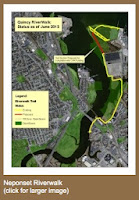Many people know the Thanksgiving legend of Squanto (Tisquantum), the Native American who taught Pilgrims how to plant crops and survive in New England. But not many know that Squanto’s legend is a fish story—in more ways than one.
Scientist and author John Waldman is the latest to take a deeper look into this part of the Thanksgiving story. His new book, Running Silver, has a fascinating chapter on how important river-running fish were for many American Indians. Waldman also reminds us how far from the facts our Thanksgiving legend of Squanto has drifted, becoming what he calls a “highly mythologized account.”
The actual historical record tells quite another story. Squanto didn’t just happen to take a liking to the pilgrims of Plymouth. Waldman says Tisquantum was a good English speaker and teacher “because he had been kidnapped from his village.”
An Englishman had attempted to sell Tisquantum into slavery in Spain where he was taken in by Spanish Friars, converted to Christianity, and later travelled to London. Tisquantum eventually returned to North America only to find, in horror, that:
to sell Tisquantum into slavery in Spain where he was taken in by Spanish Friars, converted to Christianity, and later travelled to London. Tisquantum eventually returned to North America only to find, in horror, that:
 to sell Tisquantum into slavery in Spain where he was taken in by Spanish Friars, converted to Christianity, and later travelled to London. Tisquantum eventually returned to North America only to find, in horror, that:
to sell Tisquantum into slavery in Spain where he was taken in by Spanish Friars, converted to Christianity, and later travelled to London. Tisquantum eventually returned to North America only to find, in horror, that:
“From southern Maine to Narragansett Bay the coast was empty—utterly void. What had once been a line of busy communities was now a mass of tumbledown homes…scattered among the houses and fields were skeletons bleached by the sun. Squanto’s native Patuxet had been hit with special force. At Massachusetts Bay, conflict and foreign disease caused the Native American population to plummet from approximately 37,500 to 5,300.”
Tisquantum lived among the pilgrims in Plymouth where he acted as a sort of counselor/diplomat between the colonists and Native Americans.
So the Thanksgiving legend of Squanto and the pilgrims is a “fish tale” in the sense that, like many fish stories, it is an exaggerated account. But it turns out that the more historically accurate version is also a story about fish.
Waldman tells us Tisquantum did more than teach colonists how to plant seeds with a small fish (probably menhaden) as fertilizer, he also taught them how to catch eels.
From there Waldman walks us through a collection of examples of American Indians fishing for and making use of eels, shad, river herring, salmon, sturgeon, and more.
Part of the story is told in historical accounts from early colonists, part in the archeological evidence, such as a stone weir still visible on the Passaic River in Patterson, NJ. Waldman tells how subway workers digging beneath Boston’s Boylston Street in 1913 discovered the remains of a prehistoric weir, “about 65,000 stakes interwoven with brush occur over two acres…the stakes constituted numerous small weirs constructed over as many as 15 centuries.”
Many fishes were so important to these cultures that they became sacred, Waldman writes. Eels were revered by the Algonquin and no part of the animal was wasted. The Lenape people named March the “Month of the Shad,” in honor of the spring runs. American Indians carved dozens of petroglyphs of shad along the Susquehanna River.
Alas, many of those carvings now lie at the bottom of a lake where, Waldman writes, “Any magic they once might have worked has been defeated by the giant, shad-migration-crippling Conowingo Dam.”
Waldman takes us from this deep history through colonial expansion, the industrial revolution and the rise of hydro power, right up to the present efforts to restore the rivers and the fish that once migrated in them.Running Silver is a great read for anyone with an interest in the history and science of these fish and our connections to them. It is also an exercise in faith that we might one day see our rivers “run silver” with great migration runs.
This post is from The Herring Alliance blog. The original is at: http://herringalliance.org/blog/225-a-thanksgiving-fish-story
